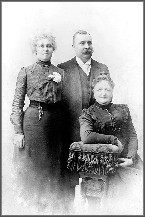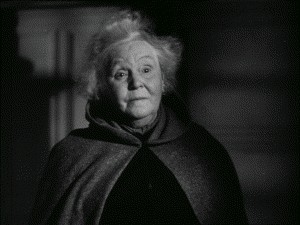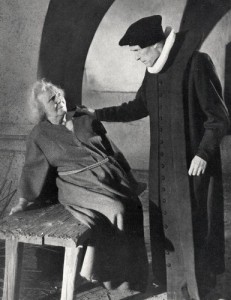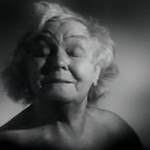FOUND ! Step-Sister of Heindel
Nov 20th, 2009 by admin
Heindel’s Sister Immortalized As An Actress
Just as translators finished their work on Ger W’s biography of Max Heindel, Westenberg’s friend, Ole V, produced “new” pictures of Heindel’s half-sister, Anna Svierkier. Vandrup discovered the pictures of Anna, who was a renowned actress, on the internet. Previous to this recent “find” Ger W possessed only one family photo that included Anna.
This prompted an internet search that revealed more pictures and reviews of a highly rated 1943 film, Day of Wrath, in which Svierkier played the role of Marte Herlof, a woman of the 17th Century who was accused of being a witch. The pursuit became a real treasure hunt when it became apparent that this movie is still available and can be downloaded in 6 parts from the internet. 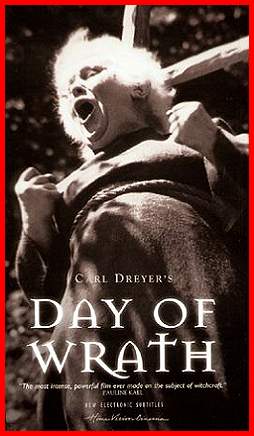 Therefore, we have a living, breathing, walking, talking half-sister of Max Heindel in black-and-white on the motion picture screen.
Therefore, we have a living, breathing, walking, talking half-sister of Max Heindel in black-and-white on the motion picture screen.
Anna’s portrayal of the persecuted Marte parallels Ger W’s chronicle of the early devotees of the Rosicrucian philosophy; they both occured in the same century.
| www.altfg.com/blog/best-films-of/best-films-of-1943/ |
Set in a 17th-century Danish village, Carl Theodor Dreyer’s masterful Vredens dag / Day of Wrath is a stark, but deeply felt indictment against religious fanaticism and intolerance. Moving performances by ingénue Lisbeth Modin and accused witch Anna Svierkier add a touch of humanity to the horrors shown on screen. It is not a coincidence that Vredens Dag was made in 1943, a time when Denmark was under Nazi occupation. The parallels — and the interconnectedness — between political and religious control are made quite clear in this harrowing masterwork.
Also Reviewed by Dennis Schwartz www.sover.net/~ozus/dayofwrath.htm
A visually stark masterpiece in realism that brings on an almost insufferable emotional energy level. The tragedy is haunting and unforgettable. It’s a brilliant but somber tale from Carl Theodor Dreyer (“Ordet”/Gertrud”) about the Danish church’s persecution of women as so-called witches in the 17th century (the story is set in 1623 in an unnamed small Dane village); it’s made in Denmark during the Nazi occupation (as the comparison between the all-powerful 17th-century Protestant church and the Nazis for having the same capacity for intolerance is unmistakable).
This grim, austere psychological drama about evil doers posing as the good guys also includes a tale of adultery to go along with the witchcraft. It’s based on the book by Hans Wiers Jenssen that was turned into the play “Anne Pedersdotter.” Its more far-ranging theme reasserts Dreyer’s assertion that witchcraft works and is more potent than orthodox religion, but they also must pay the piper for their perversion of the soul. No one gets out of here unscathed who tries to alter the legitimate ways of the world with their perverse arts (witchcraft) or religions (suspect rituals and trials).
A pious parson inquisitor named Laurentius (Olaf Ussing) 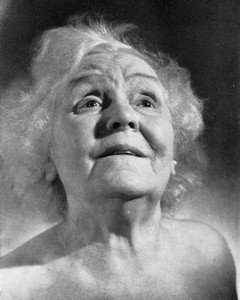 condemns a mortally weak-minded elderly woman, Marte Herlof (Anna Svierkier), to torture (that becomes so unbearable she confesses her witchcraft crimes) and then to die at the stake after she had been denounced as a witch. Another elderly parson, who acts as a judge, Absalom Pedersson (Thorkild Roose), fails to save her life even after she begs him and threatens to denounce his young second wife Anne (Lisbeth Movin) as a witch. Marte claims that the hypocritical Absalom refused to condemn Anne’s mother when she was suspected of being a witch in order to marry her beautiful child, after his first wife died. Before Marte dies in a blaze of black-and-white chiaroscuro, she puts a curse on the hypocrite parsons that they will both soon die. To prepare for her dying scene, Dreyer had Svierkier tied to a ladder near the fire while the cast went to lunch. When they returned they shot the scene and Svierkier had the look of someone really suffering at the stake. The actress told this in an interview.
condemns a mortally weak-minded elderly woman, Marte Herlof (Anna Svierkier), to torture (that becomes so unbearable she confesses her witchcraft crimes) and then to die at the stake after she had been denounced as a witch. Another elderly parson, who acts as a judge, Absalom Pedersson (Thorkild Roose), fails to save her life even after she begs him and threatens to denounce his young second wife Anne (Lisbeth Movin) as a witch. Marte claims that the hypocritical Absalom refused to condemn Anne’s mother when she was suspected of being a witch in order to marry her beautiful child, after his first wife died. Before Marte dies in a blaze of black-and-white chiaroscuro, she puts a curse on the hypocrite parsons that they will both soon die. To prepare for her dying scene, Dreyer had Svierkier tied to a ladder near the fire while the cast went to lunch. When they returned they shot the scene and Svierkier had the look of someone really suffering at the stake. The actress told this in an interview.
Another critic hails the film as: “an earlier, better version of the issues tackled in Arthur Miller’s play, The Crucible,”
The biography, Max Heindel and The Rosicrucian Fellowship, is serialized under the Books tab at the top of this blogs page. Click on Books to read the latest installment, part b of Chapter one, Origins of The Rosicrucian Order.
